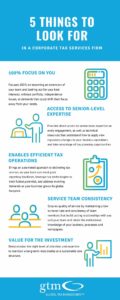FAQs: U.S. International Compliance Form Changes Prompted by TCJA Questions U.S. International Compliance Form Changes tax reform
Authors: Raymond Wynman, Mike Tighe, and Andrew Wai
We are all in for an interesting 2018 tax compliance season — new forms, changes to old forms, international tax uncertainties, and an almost certain new batch of e-file errors are just some of the many challenges that lie ahead. As tax departments gain a better understanding of the implications of tax reform, the focus is now on planning for compliance.
In GTM’s latest webinar session, Review of U.S. International Compliance Form Changes Prompted by TCJA, we walked through each U.S. international form change to help prepare you for what’s to come. Below are the questions that were asked during the session, with the answers.
Forms 8991, 8992, and 8993
Q: For some of the new forms, which are required filings? (For example, if the company does not have any GILTI inclusion, is the GILTI form required or does filing Form 8993 for the Section 250 Deduction for Foreign-Derived Intangible Income (FDII) suffice?
A: GILTI Form 8992 must be filed by any U.S. shareholder of a CFC which is subject to Sec. 951A, even if there is no GILTI inclusion overall. A domestic corporation is required to file Form 8993 even if it has no GILTI inclusion because it must still calculate its deduction for FDII (Sec. 250(a)(1)(A)). There are exemptions from filing Form 8990 for Sec. 163(j) and Form 8991 for BEAT*:
Form 8990: Small business taxpayers (i.e. less than $25 million in average gross receipts over the prior three years) which are not allocated excess business interest expense from a partnership are not required to file Form 8990. Taxpayers whose only business interest expense is from an excepted trade or business (e.g. electing real property or farming business) are also not required to file.
Form 8991: Taxpayers who do not meet the $500 million gross receipts threshold in any of the previous three taxable years are exempted from filing BEAT Form 8991, although there are still disclosures for base erosion payments required on Forms 5471 and 5472. Note that a taxpayer is potentially subject to BEAT only after having had an average of $500m in gross receipts over the prior three years.
*Note: Filing of Forms 965 and 965-B is required with the 2018 return, even if the taxpayer had Sec. 965(a) inclusions only in 2017.
Q: Should Forms 8992, 8991 and 8993 be filed at the Topcon level or at the level of the international entity owners?
A: Under the proposed regulations on BEAT, GILTI, and the Sec. 250 deduction, the calculations are performed in aggregate at the consolidated group level, with various attributes then allocated back to the consolidated group members (Prop. Reg. §1.1502-59A, §1.1502-51, and §1.1502-50, respectively). The corresponding forms 8991, 8992, and 8993 are filed at the level of the consolidated group parent, reflecting these aggregate consolidated group calculations. *
*Note: Form 8990 must also be filed at the CFC level for any CFC with business interest expense, a disallowed business interest expense carryforward, or is part of a CFC group election within the meaning of Prop. Reg. §1.163(j)-7(b)(3).
Form 5471
Q: Where can I get a complete Form 5471?
A: The latest revision of form 5471 can be found on the IRS website at https://www.irs.gov/forms-pubs/about-form-5471 (look under the “Related Items” heading for separate schedules).
Q: What if we don’t track the deferred income tax expense/benefit piece?
A: The deferred portion of income tax expense is not deductible for E&P or taxable income purposes, so we believe that the IRS is asking for the breakdown of current vs. deferred income tax expense on Schedule C to support the E&P adjustments shown on Schedule H. If the amount of deferred income tax is immaterial both under ASC 740 and within the meaning of Reg. §1-964-1(a)(2), it may be permissible to show only the current income tax. One way of possibly estimating the deferred tax expense/benefit would be to track the movement of the Deferred Tax Assets/Deferred Tax Liabilities on the balance sheet.
However, we feel that taxpayers should make every effort to calculate deferred income taxes for all CFCs. The failure to calculate and disclose deferred income taxes could potentially put the entire tax pool at risk if the taxpayer is unable to otherwise prove the amount of taxes paid with foreign tax returns.
Q: Would the entire OCI section populate only in the USD column?
A: The other comprehensive income section of Form 5471 Schedule C should include all items in OCI as defined in ASC 220 which includes not just foreign currency translation adjustments but also cash flow hedges and other derivatives, unamortized prior service cost and deferred gains and losses on pension plans, etc. These items may appear in the OCI of a CFC and must therefore be reported on Schedule C in the CFC’s functional currency. We suggest that taxpayers may consider translating amounts which are available only in USD back into the functional currency of the CFC to report on Schedule C. Note that the items in lines 23a and 23b should be reported without income taxes allocated to them. The income tax in OCI is reported separately on line 23c.
Q: Can a tax true-up payment be reported on schedule E?
A: No. After repeal of Sec. 902 by the TCJA, FTCs are determined using a year-by-year calculation rather than a pooling concept (as was the case before 1986). True-ups under Sec. 905(c) generally now require filing an amended return. The instructions to Form 5471, Schedule E note: “adjustments to foreign income taxes paid or accrued in a prior year should not be reflected on Schedule E in the year of adjustment. Instead, they should be reported in the year to which such taxes relate. This may require an amended return.”
Q: If you have an 11/30 Fiscal Year-End CFC, do you fill out Schedule I-1?
A: A calendar-year U.S. shareholder would not be subject to Sec. 951A inclusions from its 11/30 CFCs until its 2019 taxable year (See definition of CFC inclusion year at Prop. Reg. §1.951A-1(e)(2)). We do not believe it would be appropriate to include a Schedule I-1 for 11/30 CFCs with the 2018 return.
Q: Why is GILTI tested income reported on Schedule J in the general category instead of the Section 951A category?
A: Sec. 951A category income exists only at the U.S. shareholder level (i.e. on Form 1118), since GILTI is calculated at the U.S. shareholder level. CFCs earn tested income, falling mostly into the general category (a CFC may earn tested income not in the general category e.g. in a separate Sec. 904(h) category for income resourced by treaty. Prop. Reg. §1.861-13(a)). After the GILTI calculation is performed at the U.S. shareholder, the GILTI PTI (Sec. 959(c)(2)) is then pushed down to the CFCs (Prop. Reg. §1.951A-6(b)) and reported on Form 5471 Schedules J and P under the appropriate Sec. 951A PTI column.
Q: On Form 5471 Schedule J, would Column B be for 11/30 year-end companies?
A: Column B on the 5471 Schedule J is used to report post-1986 previously untaxed earnings (Sec. 959(c)(3)). We believe there will often be a balance shown in this column for fiscal-year CFCs or Sec. 965 DFICs which used the November 2, 2017 965 measurement date since their inclusion under Sec. 965(a) would not match the amount of Sec. 959(c)(3) E&P existing at the end of their taxable years. The same is true if a U.S. shareholder’s Sec. 965(b) deficits exceeded the amount of post-1986 deferred foreign income from its DFICs, in which case the deficit companies would continue to show deficits in Column B.
Q: For PTEP, does USD basis have to be reported?
A: Both Schedule J (reporting all of a CFC’s accumulated E&P, both PTI and untaxed E&P) and Schedule P (reporting U.S. shareholder’s pro rata share of PTI) are reported in the CFC’s functional currency. Form 5471 does not require disclosure of the U.S. shareholder’s U.S. dollar basis in its PTI.
Miscellaneous Questions:
Q: Can you give an example of a base eroding payment that is NOT a base erosion tax benefit?
A: A base erosion tax benefit for a taxable year is defined generally as any deduction that is allowed in that taxable year for a base erosion payment (Sec. 59A(d); Prop. Reg. §1.59A-3(c)). The key difference between base erosion tax payment and base erosion tax benefit arises from the mismatch of when the payment occurs and the timing of the associated deduction for federal income tax purposes. For example, if a taxpayer pays $1 million in 2018 to acquire depreciable property from a foreign related person and takes a $500,000 depreciation deduction on that property in 2018, the base erosion payment in 2018 was $1 million, and the base erosion tax benefit in 2018 would be $500,000. A mismatch between base erosion payment and tax benefit may also occur on a payment where the associated deduction has been disallowed in the current taxable year under the related person rules of Sec. 267(a). Note that, by definition, amounts paid or accrued in taxable years beginning before January 1, 2018 are not base erosion payments (Prop. Reb. §1.59A-3(b)(3)(vi)).
Q: If we have no 965(a) inclusion, do we file Form 965 showing only the cash position?
A: A Form 965 is required to be filed with the 2018 return if the U.S. shareholder has any inclusion under Sec. 965(a) from a DFIC in its 2017 or 2018 taxable years, even if that inclusion is entirely offset by Sec. 965(b) deficits. Therefore, a U.S. shareholder may have to make the detailed disclosures required on Form 965, 965-B, and supporting schedules even if that U.S. shareholder had no net 965 liability in either 2017 or 2018.
Q: Is GILTI specified interest expense a net interest expense (i.e. interest expense over interest income) or a gross interest expense?
A: “Specified interest expense” means the excess (if any) of:
(A) The aggregate of the shareholder’s pro rata share of the tested interest expense (as defined in Prop. Reg. §1.951A-4(b)(1)) of each CFC for the year, over
(B) The aggregate of the shareholder’s pro rata share of the tested interest income (Prop. Reg. §1.951A-4(b)(2)) of each CFC for the year. (Prop. Reg. §1.951A-1(c)(3)(iii))
In short, specified interest expense is calculated at the U.S. shareholder level by netting aggregate tested interest expense and aggregate tested interest income from its CFCs. Certain so-called qualified interest income and expense of CFCs qualifying for the active finance or insurance exceptions under Sec. 954(h) and (i) is excluded from this calculation.
Q: Which new item needed will be the most challenging to get from existing GL systems?
A: If not already being tracked for financial accounting purposes, distinguishing amounts of realized vs. unrealized gain or loss on foreign exchange and derivatives is likely to prove challenging. We have also found that getting information to calculate GILTI tested income generally according to U.S. taxable income principles has proved difficult for many clients (i.e. making adjustments for meals and entertainment, charitable contributions, lobbying expenses, etc.) as has determining adjusted basis in tangible assets (for QBAI) and depreciation expense (for tested income) under the alternative depreciation system.
We hope this post was helpful as you assess the impact of tax reform on your business. GTM publishes regular posts highlighting key features and developments of tax reform. Visit our tax reform page for the latest U. S. tax reform updates.



